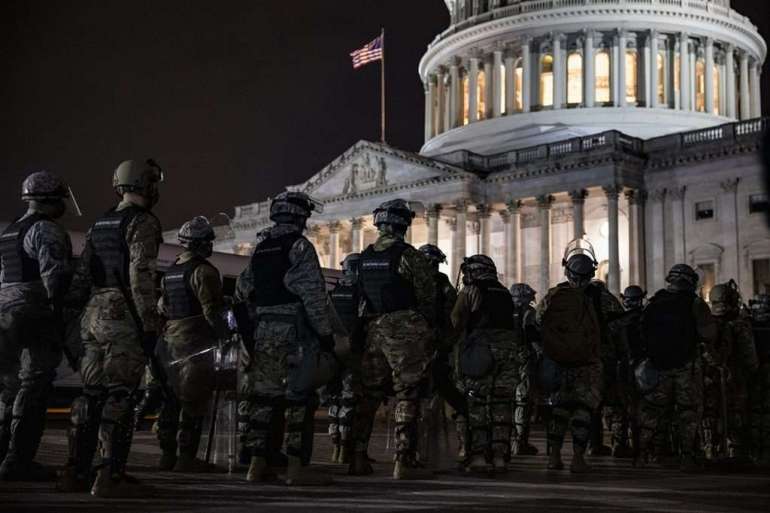Pentagon defends handling of riot response at the U.S. Capitol

“No other requests were made after a series of meetings and deliberations with all stakeholders: the Interior, Department of Homeland Security, the Capitol Hill Police and others into the lead-up of Jan. 6,” McCarthy said.
At the time, officials had a wide range of estimates for the size of the crowds that would descend on Washington for Wednesday’s procedural vote to certify President-elect Joe Biden’s win, from 2,000 to 80,000 people, McCarthy said. In an earlier press conference, he said the idea of rioters storming the Capitol wasn’t in his “wildest imagination.”
Despite widespread social media activity that suggested the protests might be violent, federal and local officials believed they had sufficient personnel to handle the situation, said chief Pentagon spokesperson Jonathan Hoffman, noting that the Pentagon does not conduct domestic intelligence collection.
“As recently as Monday or Tuesday, we were informed that additional support from DoD was not needed,” Hoffman said.
The Justice Department and other law enforcement told the Pentagon repeatedly that they had no indications that there would be “significant violent protests,” said Ken Rapuano, the assistant secretary of defense for homeland security.
Once the protests turned violent and it became clear the Capitol Police would need backup, Miller moved to approve Bowser’s request for additional D.C. Guardsmen, and later authorized thousands more personnel from six states to help civil authorities maintain order in the city, the officials said.
It initially took defense officials about 30 minutes on Wednesday to work through questions about Bowser’s request for additional support, make a determination to grant it and get Miller’s approval, McCarthy said during a Wednesday press conference with the mayor.
Army officials initially expressed concern about the request, because part of the original agreement was to keep Guardsmen away from the Capitol on Wednesday, a defense official said. Officials have messaged for weeks that the military will have no role in determining the outcome of the election.
Top Pentagon leaders were criticized this summer when National Guardsmen helped clear Lafayette Square of peaceful protesters in order for Trump to stage a photo op in front of a church holding a Bible.
Shortly after activating the additional Guardsmen, Miller spoke with congressional leaders and Vice President Mike Pence about the decision, Hoffman said. Earlier in the week, Miller had received guidance directly from Trump that he should take any necessary steps to support law enforcement, Hoffman added.
Up to 6,200 Guardsmen began arriving Wednesday night and will continue to pour into the city through Sunday, McCarthy said. They will not be armed and will be spread throughout the city, according to the defense official, who requested anonymity because they weren’t authorized to speak on the subject.
The intent is not to have all the Guardsmen, who will be mobilized for up to 30 days, on the streets of Washington at once, the official said. At any one time many personnel will be stationed at the D.C. Armory. As of Thursday morning, several hundred had fanned out across the city.
Some of the governors had already announced plans to deploy additional Guardsmen to the capital on Wednesday night. Miller’s order officially puts these troops under operational command of the D.C. National Guard, which takes orders from the Pentagon.
Miller activated the Guardsmen under Title 32 Section 502F, which provides federal funding for the mission.
Roughly 500 Guardsmen from Virginia deployed to Washington on Wednesday night, with an additional 1,500 set to arrive by Friday. About 500 personnel from Maryland were arriving on Thursday. Up to 1,000 each from Pennsylvania and New York were set to arrive by Sunday. Another 200 from Delaware would arrive by Friday, and 500 from New Jersey.